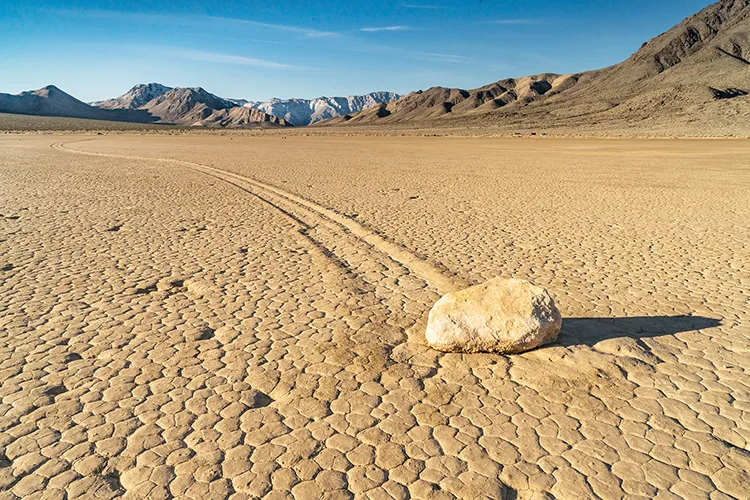
For over a century, the mysterious ‘sailing stones’ of Death Valley baffled scientists and visitors alike – until a blend of ice, wind and serendipity finally revealed their secret
In the vast, scorching expanse of Death Valley, the dried out lake bed of Racetrack Playa stretches out. Here, something strange happens. Rocks, of all different sizes leave trails, long winding paths across the flat surface.
These aren’t just small stones, either. Some are large boulders, heavy and solid. The rocks are fragments of dolomite and syenite from surrounding mountains that lie on the playa before inexplicably moving. Visitors to the park have for years seen the rock-made paths (some boulders weighing up to 300 kilograms and travelling up to 250 metres) but no one has ever actually seen the rocks move.
For decades, these rocks have been the subject of mystery and debate, with the first documented account of the sliding rocks dating to 1915. Early attempts to unravel the mystery of the stones ranged from the plausible to the fantastical to even the supernatural, with most theorising wind pushing the rocks along.
Check out our other phenomena articles…
The breakthrough in understanding came in 2013, when researchers established a weather station nearby and added 15 of their own stones to the playa, attaching GPS trackers to them. Then, they waited and watched. The cause, they discovered, was the combination of ice, water and wind. The rocks move when thin ice sheets – formed by a shallow winter pond caused by rainfall that freezes during the night – begin to break up. Driven by a light wind, ice accumulates behind the rocks and drives them forward, sometimes at up to five metres per minute!
In December 2013, more than 60 rocks were observed moving, some traveling hundreds of yards, a testament to the power of these forces.
Even with the long-awaited explanation, the sight remains remarkable. Yet, this phenomena exists within a delicate equilibrium. With climate change bringing warmer winter nights to Death Valley, it seems certain these movements will become increasingly rare.




